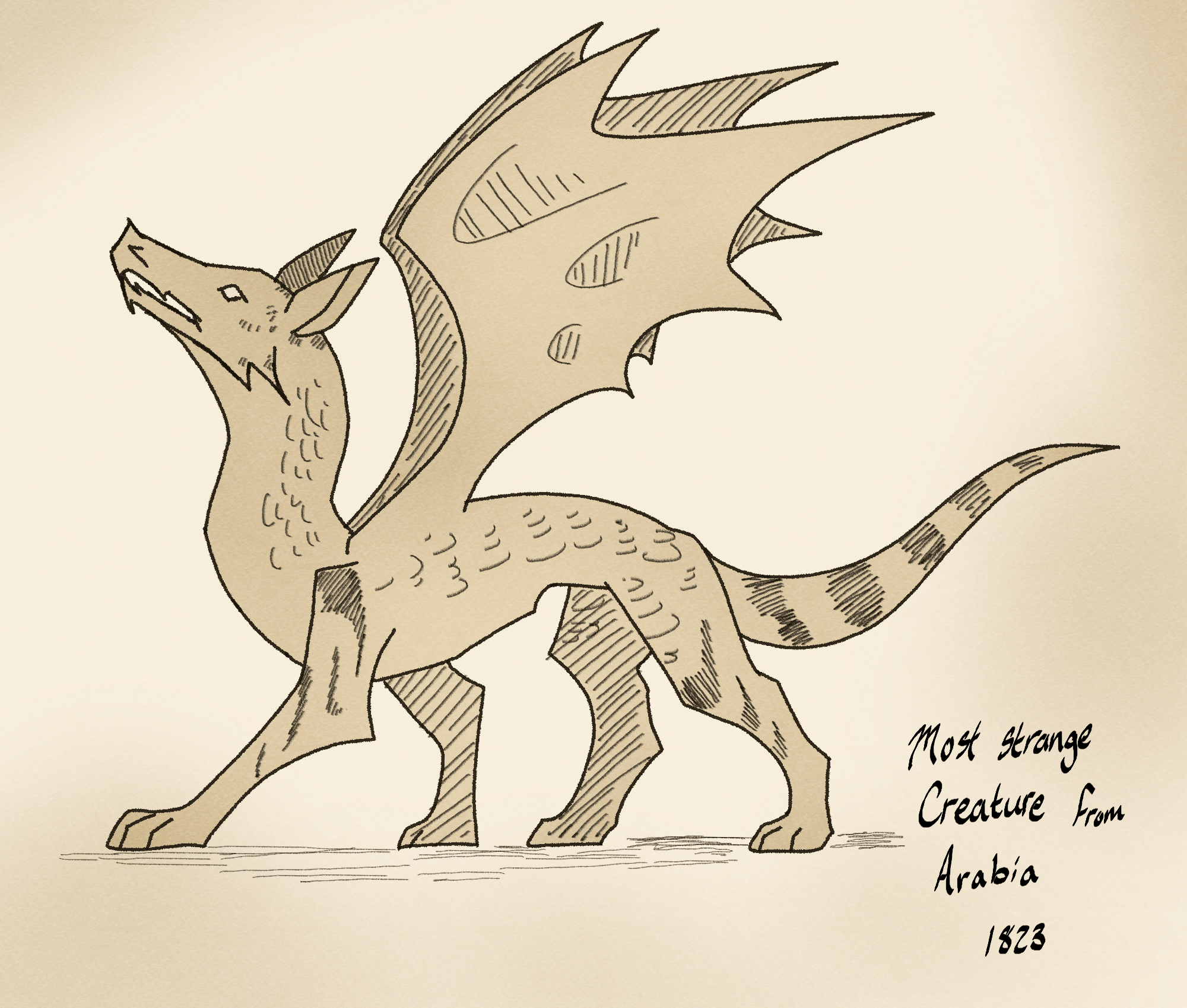Wikitable Code
| Ixnael | |
|---|---|
| |
| Unknown artist, 1823 | |
| Scientific Classification | |
| Domain | Eukaryota |
| Kingdom | Animalia |
| Phylum | Chordata |
| Class | Draconoforme |
| Order | Biventric |
| Family | Caelafuga |
| Orbital Characteristics | |
| Estimated Population | 1.5m |
| Notable Organizations | Draconic Affairs Bureau, Aeran Authority |
| External Guides | |
| Dragonkind | Design rules, inspiration key |
| Aera | Writing guide |
Not to be confused with Dragons (mythology)
Dragons refer to a group of synapsid animals that diverged from the common ancestor of mammals and reptiles approximately 300 million years ago. Dragons can be separated into several taxonomic groups based on genetic lineage, with all but four genera remaining. These include the genus of Coriumalis (leather-winged), Plumaealis (Feather-winged), Nonalis (Non-winged) and Marisalis (Water-winged).
Show Content
- 1. Biology
- 1.1 Evolutionary Theory
- 1.2 Physiology
- 1.3 Internal Anatomy
- 1.4 Lifespan
- 1.5 Reproduction
- 2. Species and Classification
- 2.1 Genetic Divergence
- 2.2 Taxonomy
- 2.3 Existing Species
- 2.4 Extinct Lineages
- 2.5 Global Distribution
- 3. Behaviour
- 3.1 Social Structures
- 3.2 Animalism
- 3.3 Survival
- 4. Culture and Society
- 4.1 Tradition vs Modernity
- 4.2 Societal Trends
- 4.3 Spirituality
- 4.4 Human Conflict
- 5. History
- 5.1 Origins
- 5.2 Alongside Humanity
- 5.3 The Great Dragon Hunts [1100s]
- 5.4 November Club
- 5.5 Modern Day
- 6. Aera
- 6.1 Overview
- 6.2 Draconic Use
- 6.3 Risks
- 7. Legal and Political Status
- 7.1 Citizenship
- 7.2 International Agreements
- 7.3 Government Assistance
- 7.4 Under the Draconic Affairs Bureau
Biology
Here are some fun extras I wanted to include:
Evolutionary Theory
something
Species and Classification
Genetic Divergence
Taxonomy
While dragons share a distant evolutionary ancestry with other chordates, they represent a wholly divergent lineage distinguished by both biological novelty and persistent genetic compatibility across global populations. Their classification follows a separate branch of terrestrial life, defined not only by physiological traits such as wing potential and omnivorous digestion but also by unique reproductive and magical adaptations. Modern taxonomic treatment places all extant dragon species within a unified clade, delineated at the class, order, and family levels, with a rich (and partially speculative) fossil history.
Draconoforme is a class of sentient, warm-blooded chordates within the kingdom Animalia characterized by the latent or expressed development of a secondary pair of dorsally mounted wing structures and a dual-mode reproductive strategy. Members of Draconoforme, informally referred to as "dragonkind", represent a biologically and culturally distinct clade that diverged from baseline vertebrates through the emergence of Aera.
Defining characteristics of draconoforme animals include the genetic potential to develop wings dorsally, the internal gestation of offspring with potential of external deposition for further development, and a variety of integumentary coverings such as feathers, scales, or fur.
Biventric is an order within the class Draconoforme distinguished by the presence of a bifurcated, two-chambered stomach and omnivorous dietary adaptation. This digestive adaptation has enabled the widespread success and ecological adaptability of dragons across diverse habitats. The order encompasses all extant dragon species, and is considered to have supplanted earlier obligate carnivorous or herbivorous lineages that failed to persist into the modern era.
The two-chambered stomach of Biventric species allows for sequential digestion: The first chamber (ventriculus minor) serves to mechanically and chemically break down ingested matter, the second chamber (ventriculus major) facilitates extended fermentation and enzymatic absorption, increasing caloric and micronutrient yield. This system allows Biventric species to subsist on relatively low-resource diets while maintaining high metabolic efficiency.
Caelafuga is the sole surviving family within the order Biventric, encompassing all dragon species capable of developing functional or vestigial wing structures. While some Caelafugan species never express wings in adulthood due to genetic variation or environmental suppression, the latent potential for wing development is a universal trait of the family.
The name Caelafuga, derived from the Latin caelum ("sky") and fugere ("to flee" or "to take flight"), reflects the ancestral evolutionary push toward aerial capability, though this trait has become culturally or biologically diminished in several contemporary species. Though functional flight is not universally present across the family, the developmental origin and placement of the wing structures, posterior to the scapulae and independent of the primary forelimbs, remain consistent across species.

